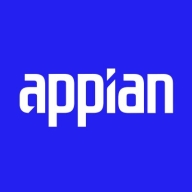

Appian and Make compete in the workflow automation market, with Appian leading in user support and deployment flexibility while Make stands out with its broad feature set.
Features: Appian provides robust process automation, strong integration abilities, and effective BPM tools. Make emphasizes versatile automation tools, customizable workflows, and task-specific integrations, appealing to businesses needing unique automations.
Ease of Deployment and Customer Service: Appian offers a straightforward deployment process with comprehensive customer service, making it suitable for businesses seeking reliable support. Make's cloud-based deployment is flexible but may demand more technical knowledge. Its customer service is less comprehensive than Appian's.
Pricing and ROI: Appian generally involves a higher setup cost but delivers significant ROI through advanced features that streamline complex processes. Make provides a more affordable pricing model with a high ROI perception due to its customizable nature, offering lower upfront costs and flexible benefits.
| Product | Market Share (%) |
|---|---|
| Appian | 5.8% |
| Make | 1.0% |
| Other | 93.2% |


| Company Size | Count |
|---|---|
| Small Business | 20 |
| Midsize Enterprise | 9 |
| Large Enterprise | 41 |
Appian is a unified low-code platform and solution used by businesses to build enterprise applications and workflows. This product adapts to the needs of clients and the technologies they are already using to combine their data in a single workflow and maximize resources. The platform has four main components through which it transforms the work process for companies of various sizes. They are:
Appian is utilized across a diverse set of industries, including automotive and manufacturing, energy and utilities, education, financial services, telecom and media, transportation, retail, insurance, healthcare, and life sciences. The most frequent use cases of Appian are customer journey, governance, risk and compliance, operational efficiency, supply chain, distributed order management, and environmental, social, and governance (ESG) management.
Appian Features
Appian has various features that allow users to create solutions for their businesses. These features can be separated into a few groups according to function, including automation, low-code application development, and integrations and data. Some of the most frequently used features of Appian include:
Appian Benefits
The benefits of using Appian include:
Reviews from Real Users
A practice leader - digital process automation at a computer software company values Appian highly because the product is easy to develop, low-code, and has a good user interface.
Alan G., an advisory board member at Codecon VR, Appian offers a clear application life cycle, easy to learn documentation, and comes with a fundamentals course.
Make lets you visually build workflows to solve complex problems - the way you imagine them in your mind.
We monitor all Process Automation reviews to prevent fraudulent reviews and keep review quality high. We do not post reviews by company employees or direct competitors. We validate each review for authenticity via cross-reference with LinkedIn, and personal follow-up with the reviewer when necessary.